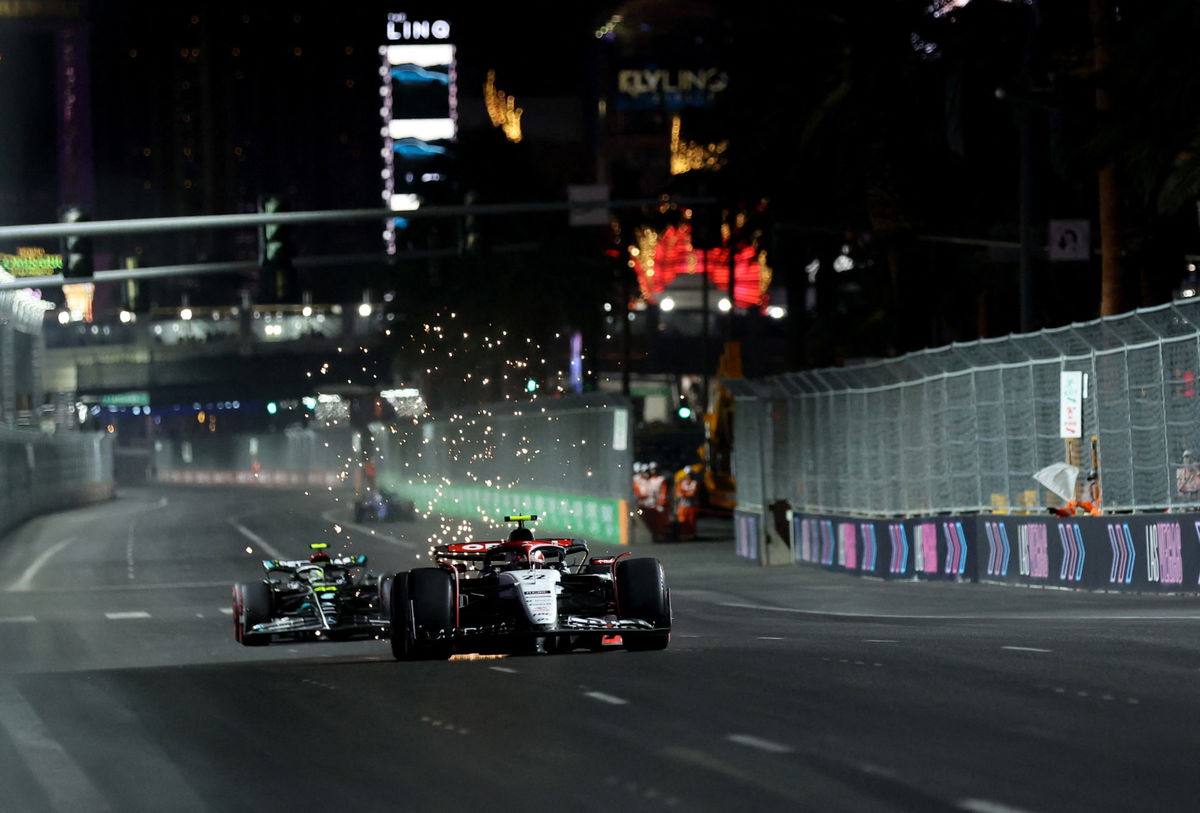
Reuters
Formula One F1 – Las Vegas Grand Prix – Las Vegas Strip Circuit, Las Vegas, Nevada, U.S – November 17, 2023 AlphaTauri’s Yuki Tsunoda and Mercedes’ Lewis Hamilton in action during practice REUTERS/Mike Blake

Reuters
Formula One F1 – Las Vegas Grand Prix – Las Vegas Strip Circuit, Las Vegas, Nevada, U.S – November 17, 2023 AlphaTauri’s Yuki Tsunoda and Mercedes’ Lewis Hamilton in action during practice REUTERS/Mike Blake
Brakes are one of the most crucial components of a Formula 1 car or any car for that matter. They not only help the drivers slow down the mammoth speeds an F1 car is capable of incredibly quickly, but they are essential for safety purposes, and it’s the last thing you want to be dysfunctional on the car. The 2024 season opener in Bahrain was the perfect example of how bad brakes can destroy your race, as Charles LeClerc experienced it firsthand. Speaking of being broken, one of the most common issues that occur with the brakes in an F1 car is brake glazing.
Watch What’s Trending Now!
How and why does brake glazing happen in Formula 1?
The problem arises with carbon fiber brakes, that have a narrow temperature range for optimal performance. They struggle to work efficiently below 350°C and can’t handle temperatures above 1000°C without dramatically increasing wear.
ADVERTISEMENT
A Formula 1 car's brakes can reach temperatures of up to 1000°C, hotter than molten lava.
[📹 Credit: Formula 1] pic.twitter.com/rTPjhwE7XP
— Will Coetzee (@WillCoetzee) August 26, 2023
Brake glazing in F1 is a phenomenon that occurs when the braking system experiences low temperatures and the driver applies very light brake pressure. Instead of generating friction as intended, the brake pads essentially polish the surface of the disc. This results in a smooth, shiny surface on both the disc and brake pad, reducing their ability to generate friction and heat. Consequently, drivers experience inconsistent braking, leading to snatching and locking up unpredictably.
Glazing is more likely to occur in wet conditions, where temperatures are typically lower, and drivers are hesitant to apply hard braking due to minimal grip. In such conditions, the lack of sufficient braking force combined with low temperatures leads to glazing. Once the disc becomes glazed, the brakes lose efficiency, causing the driver to slow down even further. This creates a detrimental cycle where the conditions for further glazing are perpetuated.
ADVERTISEMENT
In the competitive world of F1, one constant remains unchanged: Brembo. For the 2024 season, Brembo has been chosen by 9 out of 10 Formula 1 teams as the supplier of braking components, confirming itself as a partner of the main teams in the field of safety and performance. pic.twitter.com/wog9ThPK5s
— Brembo (@BremboBrakes) March 1, 2024
What’s important to note is that the brakes on an F1 car are way different from what you’d find on your everyday car. Most cars on the road have heavy braking systems made of cast iron discs and organic pads. But Formula 1 cars? They’re in a whole different league with their carbon-carbon brakes. These discs are super light, weighing only about 1.5 kilograms each, and can handle incredibly high temperatures.
ADVERTISEMENT
However, F1 drivers have to keep them in the optimum working temperature range. That’s why you see Formula 1 drivers speeding up and braking hard, especially during an out-lap, or the formation lap, or when there’s a safety car. They need to keep those brakes hot and happy if they want to avoid a glazed brake.
Top Stories
Who Are Lando Norris’s Parents? Meet Adam Norris and Cisca Wauman

Who Is Lando Norris’ Girlfriend? Everything You Need to Know About Margarida Corceiro

Who Is Oscar Piastri’s Father, Chris Piastri? Co-Founder of Multibillion Dollar Automotive Company

“Not Speaking to Anyone” – ‘Broken’ Lewis Hamilton Cuts All Ties With F1 World After Humiliating Season

Who Is Flo Norris: Lando Norris’ Equestrian Champion Sister?

READ MORE: F1 Rumor: Ferrari Hides True Pace as They Bring Major Aerodynamic Overhaul at Saudi Arabian GP
If you have any questions about brake glazing in F1, feel free to drop them in the comments.
ADVERTISEMENT
ADVERTISEMENT
ADVERTISEMENT
ADVERTISEMENT

